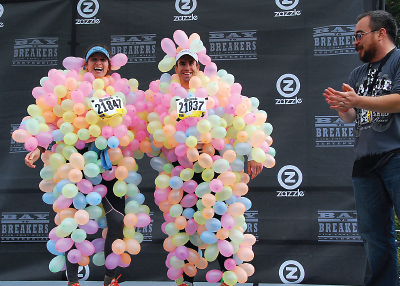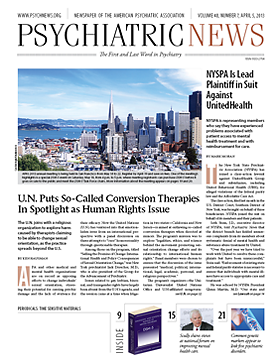The early morning start for the Bay to Breakers 12-kilometer race gives APA meeting attendees a chance to see one of San Francisco’s most colorful annual happenings.
The race shows off serious athletic prowess for some and San Francisco’s inexhaustible creativity for others as it winds its way across the city. Now one of the city’s great free (to the viewer) cultural events, the race begins at 7 a.m. on Sunday, May 19.
Tens of thousands of runners will take off from the corner of Howard and Main streets near the Embarcadero on San Francisco Bay and weave their way westward through Golden Gate Park to the Pacific Ocean.
The usual crop of world-class entrants in major races will no doubt lead the pack, but thousands of others will be running, jogging, or strolling just for the fun of it.
In fact, some would seem a little out of place at an ordinary track meet. Many participants eschew the serious runner’s singlet and shorts for costumes, each more bizarre than the next. And then there’s the Centipede, a Bay to Breakers innovation defined as a team of at least 13 runners connected by ropes or part of some elaborate costume.
The costumes, which in the past have occasionally consisted of nothing more than lots of body makeup, are canvases for personal creativity. Last year’s costume prize winner was a relatively chaste presentation of an eclipse of the sun, while the Centipede costume prize went to a group of dirndl-clad young women linked by faux sausages.
The Bay to Breakers race got its start in 1912, partly as a civic morale builder after the 1906 earthquake and partly as a lead-in to the athletic events scheduled for the 1915 Pan Pacific Exposition.
For years, it was a men-only event, until Barbara Burke sneaked in (as “Bobby”) for the 1940 race. She was discovered before the race began, however. Organizers debated whether she should be allowed to participate, but they relented at the insistence of her boyfriend, a prior race winner.
However, not until 1971 were women officially allowed to run. Frances Conley, M.D., led the women’s division that year. Conley was no slouch at historic firsts. She was also the first woman to pursue a surgical internship at Stanford University Hospital and the first woman to be a tenured full professor of neurosurgery at a U.S. medical school (also at Stanford).
Unbelievable as it may seem today, the 1963 race attracted only 25 registered runners, the smallest contingent ever. But the running boom of the 1970s changed that. Registrations peaked at more than 110,000 in 1986. In 2013, 50,000-plus are expected to sign up for the race. Thousands of citizens (and visitors) will line the streets to watch the passing parade of humanity.
For record keepers, Sammy Kitwara of Kenya set the men’s course mark (and tied the world’s best 12K time) of 33:31 in 2009. A year later, another Kenyan, Lineth Chepkurui, set the women’s course record with a time of 38:07. ■

